
The masque was a form of festive courtly entertainment that flourished in 16th- and early 17th-century Europe, though it was developed earlier in Italy, in forms including the intermedio. A masque involved music, dancing, singing and acting, within an elaborate stage design, in which the architectural framing and costumes might be designed by a renowned architect, to present a deferential allegory flattering to the patron. Professional actors and musicians were hired for the speaking and singing parts. Masquers who did not speak or sing were often courtiers: the English queen Anne of Denmark frequently danced with her ladies in masques between 1603 and 1611, and Henry VIII and Charles I of England performed in the masques at their courts. In the tradition of masque, Louis XIV of France danced in ballets at Versailles with music by Jean-Baptiste Lully.
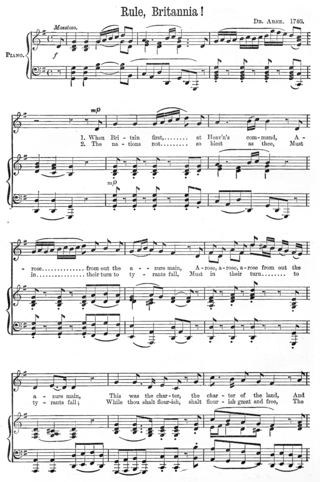
"Rule, Britannia!" is a British patriotic song, originating from the 1740 poem "Rule, Britannia" by James Thomson and set to music by Thomas Arne in the same year. It is most strongly associated with the Royal Navy, but is also used by the British Army.

"Merry England", or in more jocular, archaic spelling "Merrie England", refers to a utopian conception of English society and culture based on an idyllic pastoral way of life that was allegedly prevalent in Early Modern Britain at some time between the Middle Ages and the onset of the Industrial Revolution. More broadly, it connotes a putative essential Englishness with nostalgic overtones, incorporating such cultural symbols as the thatched cottage, the country inn and the Sunday roast.
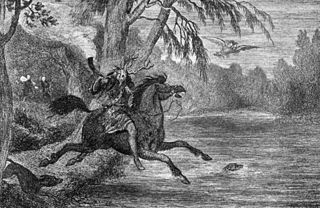
In English folklore, Herne the Hunter is a ghost associated with Windsor Forest and Great Park in the English county of Berkshire. He is said to have antlers growing from his head, ride a horse, torment cattle, and rattle chains. The earliest mention of Herne comes from William Shakespeare's 1597 play The Merry Wives of Windsor, and it is impossible to know how accurately or to what degree Shakespeare may have incorporated a real local legend into his work, though there have been several later attempts to connect Herne to historical figures, pagan deities, or ancient archetypes.

Thespis, or The Gods Grown Old, is an operatic extravaganza that was the first collaboration between dramatist W. S. Gilbert and composer Arthur Sullivan. No musical score of Thespis was ever published, and most of the music has been lost. Gilbert and Sullivan went on to become the most famous and successful artistic partnership in Victorian England, creating a string of enduring comic opera hits, including H.M.S. Pinafore, The Pirates of Penzance and The Mikado.

The Alhambra was a popular theatre and music hall located on the east side of Leicester Square, in the West End of London. It was built originally as the Royal Panopticon of Science and Arts opening on 18 March 1854. It was closed after two years and reopened as the Alhambra. The building was demolished in 1936. The name was also adopted by many other British music hall theatres located elsewhere; in Bradford, in Hull and in Glasgow etc. The name comes from association with the Moorish splendour of the Alhambra palace in Granada, Spain.
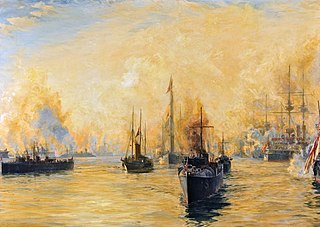
HMY Alberta was a royal yacht of the Royal Navy of the United Kingdom. She was built by Pembroke Dock and launched in 1863.

Merrie England is an English comic opera in two acts by Edward German to a libretto by Basil Hood. The patriotic story concerns love and rivalries at the court of Queen Elizabeth I, when a love letter sent by Sir Walter Raleigh to one of Queen Elizabeth's ladies-in-waiting, Bessie Throckmorton, ends up in the hands of the Queen. Well-known songs from the opera include "O Peaceful England", "The Yeomen of England" and "Dan Cupid hath a Garden".
Festive ecology explores the relationships between the symbolism and the ecology of the plants, fungi and animals associated with cultural events such as festivals, processions, and special occasions. Examples of topics are given below.

The Sapphire Necklace, or the False Heiress, was the first opera composed by Arthur Sullivan. It was never performed, and most of the music and libretto are now lost.
Le Roi Candaule is a Grand ballet in four acts and six scenes, with choreography by Marius Petipa and music by Cesare Pugni. The libretto is by Jules-Henri Vernoy de Saint-Georges and is based on the history of King Candaules the Ruler of Lydia, as described by Herodotus in his Histories.

L'Île Enchantée is an 1864 ballet by Arthur Sullivan written as a divertissement at the end of Vincenzo Bellini's La Sonnambula at Covent Garden. It was choreographed by H. Desplaces.

George Wilford Bulkley Byng was an English conductor, composer, music arranger and musical director of the late 19th and early 20th centuries. He is known for composing music for ballet productions staged at the Alhambra Theatre in London during the Edwardian era, for his theatre compositions, and as a conductor for HMV from World War I up to about 1930. Byng was his stage name.
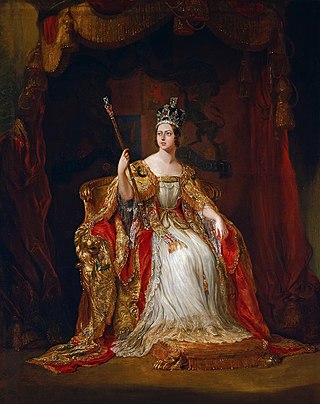
The coronation of Victoria as Queen of the United Kingdom took place on Thursday, 28 June 1838, just over a year after she succeeded to the throne of the United Kingdom at the age of 18. The ceremony was held in Westminster Abbey after a public procession through the streets from Buckingham Palace, to which the Queen returned later as part of a second procession.
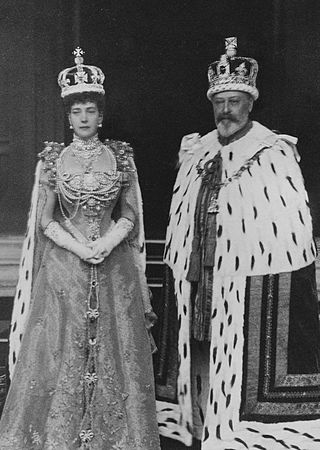
The coronation of Edward VII and his wife, Alexandra, as king and queen of the United Kingdom and the British Dominions, and as emperor and empress of India took place at Westminster Abbey, London, on 9 August 1902. Originally scheduled for 26 June of that year, the ceremony had been postponed at very short notice, because the King had been taken ill with an abdominal abscess that required immediate surgery. In contrast to the coronation of Queen Victoria, Edward's predecessor, some 64 years earlier, Edward and Alexandra's coronation had been carefully planned as a spectacle reflecting the influence and culture of the British Empire, then at the height of its power, but also as a meaningful religious occasion.

Randall Kay Williams was a Victorian showman noted for popularising moving pictures on British fairgrounds. The first known reference to a cinematograph exhibition in Williams' show was at Rotherham Statute Fair on 2 November 1896.
Alfred Moul was a composer, pianist, agent, critic, and impresario. His origins are uncertain, but there is some evidence that he was from Australia. He studied music in London under Julius Benedict, after which he travelled to Australia in 1876. He performed and composed, and from mid-1880 was music critic of two Melbourne papers.

Georges Jacobi was a German violinist, composer and conductor who was musical director of the Alhambra Theatre in London from 1872 to 1898. His best-known work was probably The Black Crook (1872) written with Frederick Clay for the Parisian operetta-star Anna Judic and which ran for 310 performances. Although never achieving the standing of Hervé, or Offenbach or Sullivan, he composed over 100 pieces for ballet and the theatre which were popular at the time.
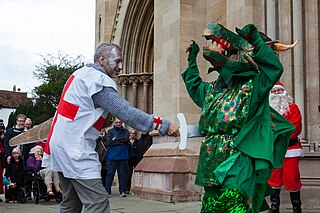
Mummers' plays are folk plays performed by troupes of amateur actors, traditionally all male, known as mummers or guisers. Historically, mummers' plays consisted of informal groups of costumed community members that visited from house to house on various holidays. Today the term refers especially to a play in which a number of characters are called on stage, two of whom engage in a combat, the loser being revived by a doctor character. This play is sometimes found associated with a sword dance though both also exist in Britain independently.















